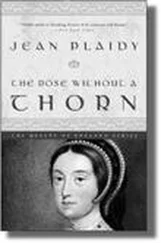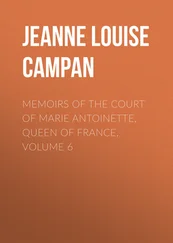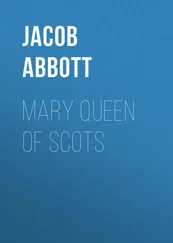Henry Bell - Life of Mary Queen of Scots, Volume 1 (of 2)
Здесь есть возможность читать онлайн «Henry Bell - Life of Mary Queen of Scots, Volume 1 (of 2)» — ознакомительный отрывок электронной книги совершенно бесплатно, а после прочтения отрывка купить полную версию. В некоторых случаях можно слушать аудио, скачать через торрент в формате fb2 и присутствует краткое содержание. Жанр: foreign_antique, foreign_prose, на английском языке. Описание произведения, (предисловие) а так же отзывы посетителей доступны на портале библиотеки ЛибКат.
- Название:Life of Mary Queen of Scots, Volume 1 (of 2)
- Автор:
- Жанр:
- Год:неизвестен
- ISBN:нет данных
- Рейтинг книги:5 / 5. Голосов: 1
-
Избранное:Добавить в избранное
- Отзывы:
-
Ваша оценка:
- 100
- 1
- 2
- 3
- 4
- 5
Life of Mary Queen of Scots, Volume 1 (of 2): краткое содержание, описание и аннотация
Предлагаем к чтению аннотацию, описание, краткое содержание или предисловие (зависит от того, что написал сам автор книги «Life of Mary Queen of Scots, Volume 1 (of 2)»). Если вы не нашли необходимую информацию о книге — напишите в комментариях, мы постараемся отыскать её.
Life of Mary Queen of Scots, Volume 1 (of 2) — читать онлайн ознакомительный отрывок
Ниже представлен текст книги, разбитый по страницам. Система сохранения места последней прочитанной страницы, позволяет с удобством читать онлайн бесплатно книгу «Life of Mary Queen of Scots, Volume 1 (of 2)», без необходимости каждый раз заново искать на чём Вы остановились. Поставьте закладку, и сможете в любой момент перейти на страницу, на которой закончили чтение.
Интервал:
Закладка:
The Commissioners who, about this time, were sent into France, and the motives of their embassy, will be spoken of afterwards. But the remarkable circumstance, that four of them died when about to return home, – one at Paris, and three at Dieppe, – had a considerable influence in exciting the populace to still greater hatred against the French party, – it being commonly suspected that they had come by their death unfairly. The Congregation now rose in their demands; and among other things, insisted that “the wicked and scandalous lives” of churchmen should be reformed, according to the rules contained in the New Testament, the writings of the ancient fathers, and the laws of Justinian the Emperor. For a while, the Queen Regent temporized; but finding it impossible to preserve the favour of both parties, she yielded at length to the solicitations of the Archbishop of St Andrews, and determined to resist the Reformers vigorously. In 1559, she summoned all the ministers of the Congregation, to appear before her at Stirling. This citation was complied with, but not exactly in the manner that the Queen wished; for the ministers came not as culprits, but as men proud of their principles, and accompanied by a vast multitude of those who were of the same mode of thinking. The Queen, who was at Stirling, did not venture to proceed to Perth; and the request she made, that the numbers there assembled should depart, leaving their ministers to be examined by the Government, having been refused, she proceeded to the harsh and decisive measure of declaring them all rebels.
The consternation which this direct announcement of hostilities occasioned among them, was still at its height, when the great champion of the Scottish Reformation, John Knox, arrived at Perth. This celebrated divine had already suffered much for “the good cause;” and though his zeal and devotion to it were well known, it was not till latterly that he had entertained much hope of its final triumph in his native country. He had spent the greater part of his life in imprisonment or exile; he had undergone many privations, and submitted to many trials. But these were the daily food of the Reformers; and, whilst they only served to strengthen them in the obduracy of their belief, they had the additional effect of infusing a morose acerbity into dispositions not naturally of the softest kind. Knox had returned only a few days before from Geneva, where he had been solacing his solitude by writing and publishing that celebrated work, which he was pleased to entitle, “The first blast of the trumpet against the monstrous regiment of women.” This treatise, directed principally against Mary of England, not forgetting Mary Queen of Scots and her mother of Guise, rather overshot its own purpose, by bringing the Reformer into disrepute with Elizabeth, who came to the crown soon after its appearance. To pacify that Queen, for it appears even Knox could temporize occasionally, he gave up his original intention of blowing his trumpet thrice, and his first blast was his last. 5 5 M’Crie’s Life of Knox, vol. i. p. 222.
The day after the ministers and their friends, had been declared rebels, Knox delivered at Perth what Keith terms “that thundering Sermon against Idolatry.” The tumult which ensued at the conclusion of this discourse, has been attributed by some historians to accident; but Keith’s suspicion, that Knox had a direct intention to excite it, seems well founded, when we consider the ferment in which the minds of his audience were at the time, and the peculiar style in which he addressed them. Buchanan is of the same opinion, though he would naturally have leant to the other conclusion. He says that Knox, “in that ticklish posture of affairs, made such a pathetic sermon to the multitude who were gathered together, that he set their minds, which were already fired, all in a flame.” If, in addition to this, the usual manner of Knox’s eloquence be considered, it will hardly be questioned but that the outrage of that day was of his doing. His vehemence in the pulpit was at all times tremendous; indeed, in so far as the effect he produced upon his hearers was concerned, he seems to have trusted almost as much to the display of his physical as of his mental energies. Many years after the period now alluded to, when he was in his old age, and very weak, Melville tells us, that he saw him every Sunday go slowly and feebly, with fur about his neck, a staff in his hand, and a servant supporting him, from his own house, to the parish church in St Andrews. There, after being lifted into the pulpit, his limbs for some time were so feeble, that they could hardly support him; but ere he had done with his sermon, he became so active and vigorous, that he was like “to ding the pulpit in blads, and flie out of it.” 6 6 M’Crie’s Life of Knox, vol. ii. p. 206.
What he must have been, therefore, in his best days, may be more easily imagined than described.
On the present occasion, after Knox had preached, and some of the congregation had retired, it appears that some “godly men” remained in the church. A priest had the imprudence to venture in among them, and to commence saying mass. A young man called out that such idolatry was intolerable, upon which it is said that the priest struck him. The young man retorted, by throwing a stone, which injured one of the pictures. The affair soon became general. The enraged people fell upon the altars and images, and in a short time nothing was left undemolished but the bare walls of the church. The Reformers throughout the city, hearing of these proceedings, speedily collected, and attacking the monasteries of the Gray and Black Friars, along with the costly edifice of the Carthusian Monks, left not a vestige of what they considered idolatrous and profane worship in any of them. The example thus set at Perth was speedily followed almost everywhere throughout the country.
These outrages greatly incensed the Queen Regent, and were looked upon with horror by the Catholics in general. To this day, the loss of many a fine building, through the zeal of the early Reformers, is a common subject of regret and complaint. It is to be remembered, however, that no revolution can be effected without paying a price for it. If the Reformation was a benefit, how could the Catholic superstition be more successfully attacked, than by knocking down those gorgeous temples, which were of themselves sufficient to render invincible the pride and inveterate bigotry of its votaries? The saying of John Knox, though a homely, was a true one, – “Pull down their nests, and the rooks will fly away.” It is not improbable, as M’Crie conjectures, that had these buildings been allowed to remain in their former splendour, the Popish clergy might have long continued to indulge hopes, and to make efforts, to be restored to them. Victories over an enemy are celebrated with public rejoicings, notwithstanding the thousands of our fellow-countrymen who may have fallen in the contest. Why should the far more important victory, over those who had so long held in thraldom the human mind, be robbed of its due praise, because some statues were mangled, some pictures torn, and some venerable towers overthrown? 7 7 The Biographer of Knox goes perhaps a little too far, when he proposes to alleviate the sorrow felt for the loss of these architectural monuments of superstition, by reminding the antiquarian that Ruins inspire more lively sentiments of the sublime and beautiful than more perfect remains. This is a piece of ingenuity, but not of sound reasoning. It is rather a curious doctrine, that a Cathedral or Monastery does not look best with all its walls standing. – M’Crie’s Life of Knox, vol. I. p. 271.
With as little delay as possible, the Queen Regent appeared with an army before Perth, and made herself mistress of the town. The Reformers, however, were not to be intimidated; and their strength having, by this time, much increased, it was deemed prudent by the Regent not to push matters to an extremity. Both parties agreed to disband their forces, and to refer the controversy to the next Parliament. As was to be expected, this temporary truce was not of long duration. Incessant mutual recrimination and aggression, soon induced both sides to concentrate their forces once more. Perth was re-taken by the Reformers, who shortly afterwards marched into Edinburgh. After remaining there for some time, they were surprised by a sudden march which the Queen made upon them from Dunbar, and were compelled to fall back upon Stirling.
Читать дальшеИнтервал:
Закладка:
Похожие книги на «Life of Mary Queen of Scots, Volume 1 (of 2)»
Представляем Вашему вниманию похожие книги на «Life of Mary Queen of Scots, Volume 1 (of 2)» списком для выбора. Мы отобрали схожую по названию и смыслу литературу в надежде предоставить читателям больше вариантов отыскать новые, интересные, ещё непрочитанные произведения.
Обсуждение, отзывы о книге «Life of Mary Queen of Scots, Volume 1 (of 2)» и просто собственные мнения читателей. Оставьте ваши комментарии, напишите, что Вы думаете о произведении, его смысле или главных героях. Укажите что конкретно понравилось, а что нет, и почему Вы так считаете.












